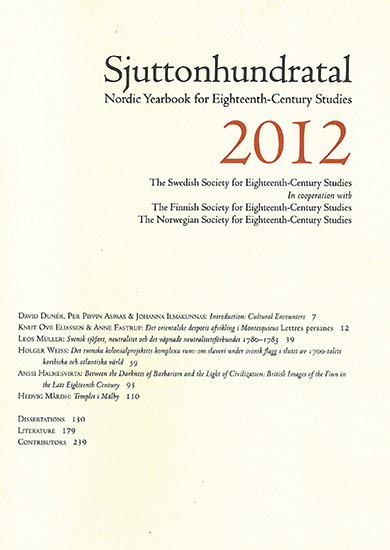Between the Darkness of Barbarism and the Light of Civilization: British Images of the Finn in the Late Eighteenth Century
DOI:
https://doi.org/10.7557/4.3245Keywords:
History of ideas, travel books, proto-racialism, Finns, Enlightenment, RomanticismAbstract
This article aims to show that it was the British travellers (Coxe, Tooke, Clarke,et al.) to Finland in the late eighteenth century who discovered Finland for the
British reading public. As they distinguished the Finns as a separate ‘race’ from
the Russians, the Swedes, and the Lapps, they contributed to the proto-racialist
image of them that would become popular in the nineteenth century. Because
Sweden had become an important maritime trading partner (in iron ore, tar, and
timber) to the British, its eastern part, Finland, also became an interesting country
to visit en route from Stockholm to Saint Petersburg (or from Saint Petersburg
to Stockholm). The travellers were astonished to realize that the Finnish
peasants had attained a higher degree of civilization than their Russian counterparts, who were still serfs, and additionally that there were in Finland bourgeois and noble people who had acquired culture and wealth. This image of the Finn as living between the civilized Swedes and ‘backward’ Russians was inherited by the Romantics from the enlightened travellers, and it penetrated later anthropological studies on the ‘races of man’.
Metrics
Metrics Loading ...









